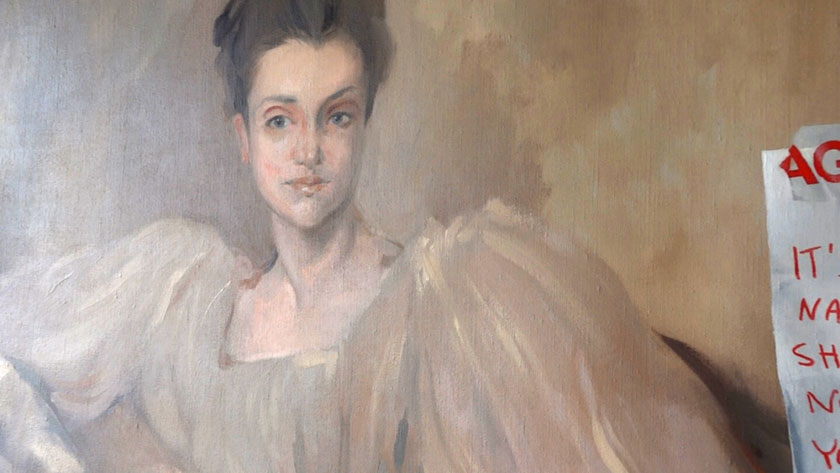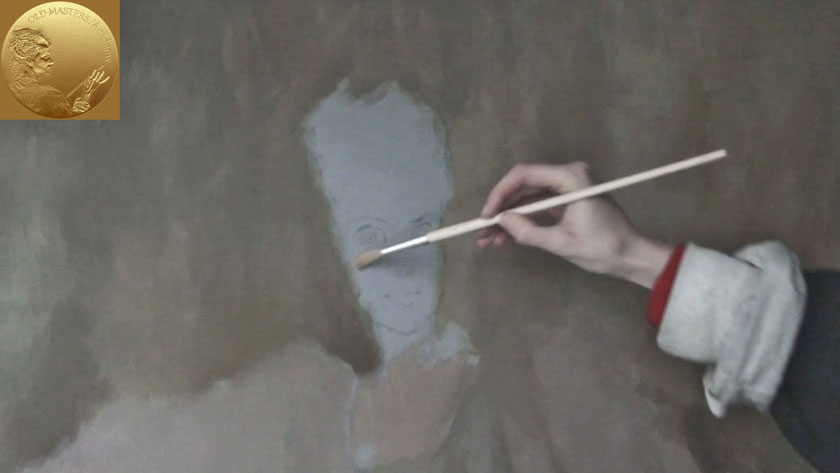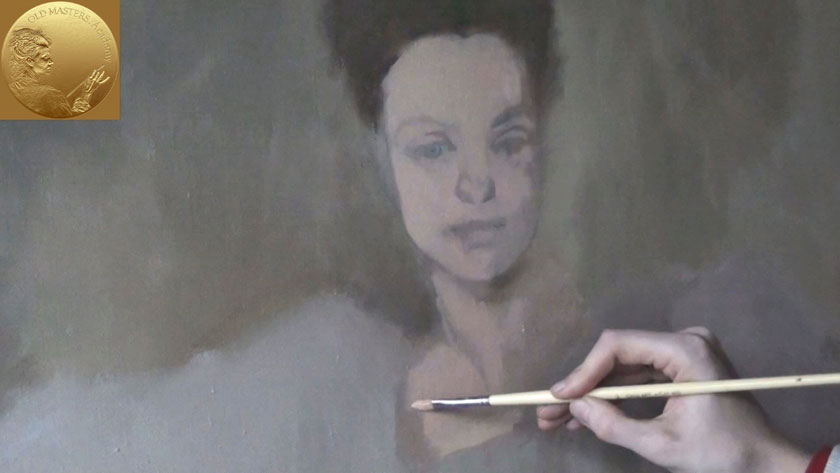Art Lesson 47, Part 2
How to Paint a Portrait in the Direct Method
Learn how to paint like the Old Masters!
Old Masters Academy Online Course
Self-study, self-paced online video course Lifetime membership One-time payment: $487 Enroll Now!Personal Tutoring online + Online Course
Unlimited tutoring by the Academy teachers Lifetime membership One-time payment: $997 Enroll Now!« Back to the Art Lessons List
Portrait Underpainting in Direct Painting Method
During our last session we have done the whole surface of the painting in mid-tone, leaving only the face uncovered. The charcoal face sketch can be left unfixed. You shouldn’t worry if the charcoal and oil paint are mixed together when you paint over the sketch later. This will give an interesting effect when sharp sketch lines are smoothed and disappear under the paint.

The face will be painted in one go, using the ala-prima technique from beginning to end. The primed canvas still holds the sketch of the sitter’s face. When the background around the head was painted, the paint covered a little bit of the head edges intentionally.
Now we are using the flesh-colored paint to cover all of the face and décolleté. For this purpose we are using a tone slightly darker than it will be in the finished portrait. The first layer of paint can be diluted with Turpentine as a medium.

After covering the portrait with mid-tone, we continue with the hair. The hair is painted as one big dark spot with diffused borders. You should note that the forehead was painted higher that anatomically necessary. The forehead was extended on purpose. The hair roots above the forehead will be easier to depict when skin tone is already present under the hair.

From this point forward you may forget about Turpentine or any other medium. From now on, the portrait will be done in oil paint as it comes from the tubes, without diluting it. We will use soft and semi-soft brushes in various sizes depending on our needs. The top layers should be quite thin rather than thick; otherwise it will be difficult to paint wet-on-wet due to the thickness of the paint layer. Apply a moderate quantity of oil paint and spread it out by rubbing as required. Now we have mixed the desired mid-tone for the portrait as it will appear in the finished painting. This paint mix is used all over the portrait, excluding the dark places. Using a small, soft brush, we’re painting the details of the facial features.

The portrait shades are being painted in a darker color, contrasting even more with the rest of the face. We are mixing English Red and Naples Yellow; this mix will be used for the lady’s lips. Painting the lips is quite a creative process. Use only a few laconic brushstrokes to depict the three-dimensional shape of the lips.




